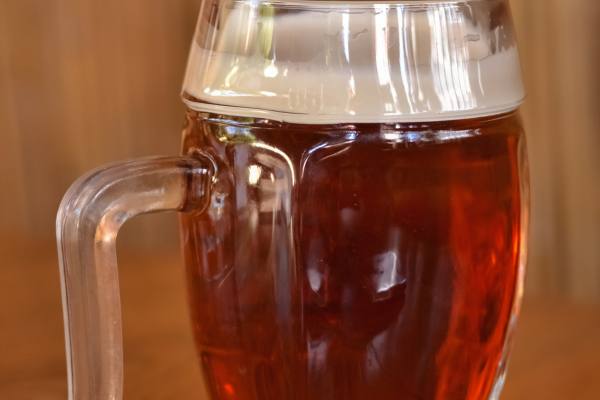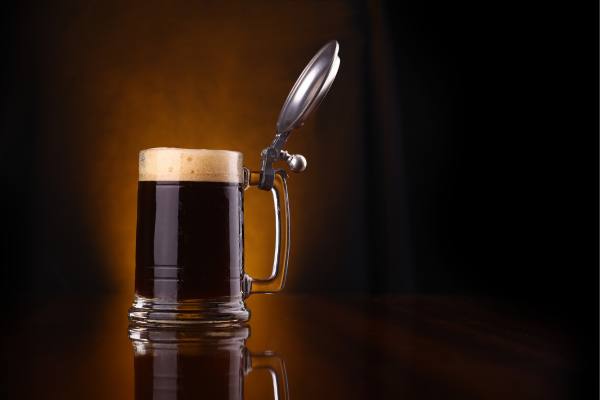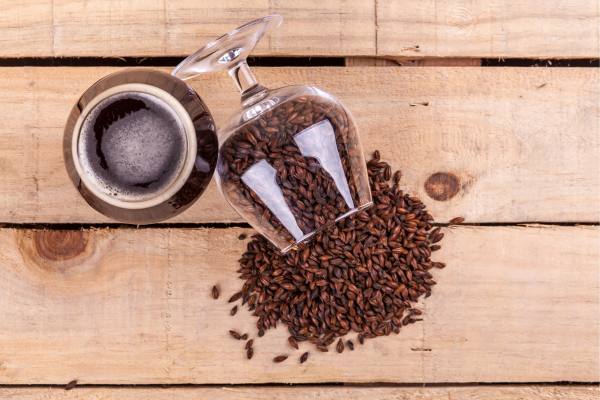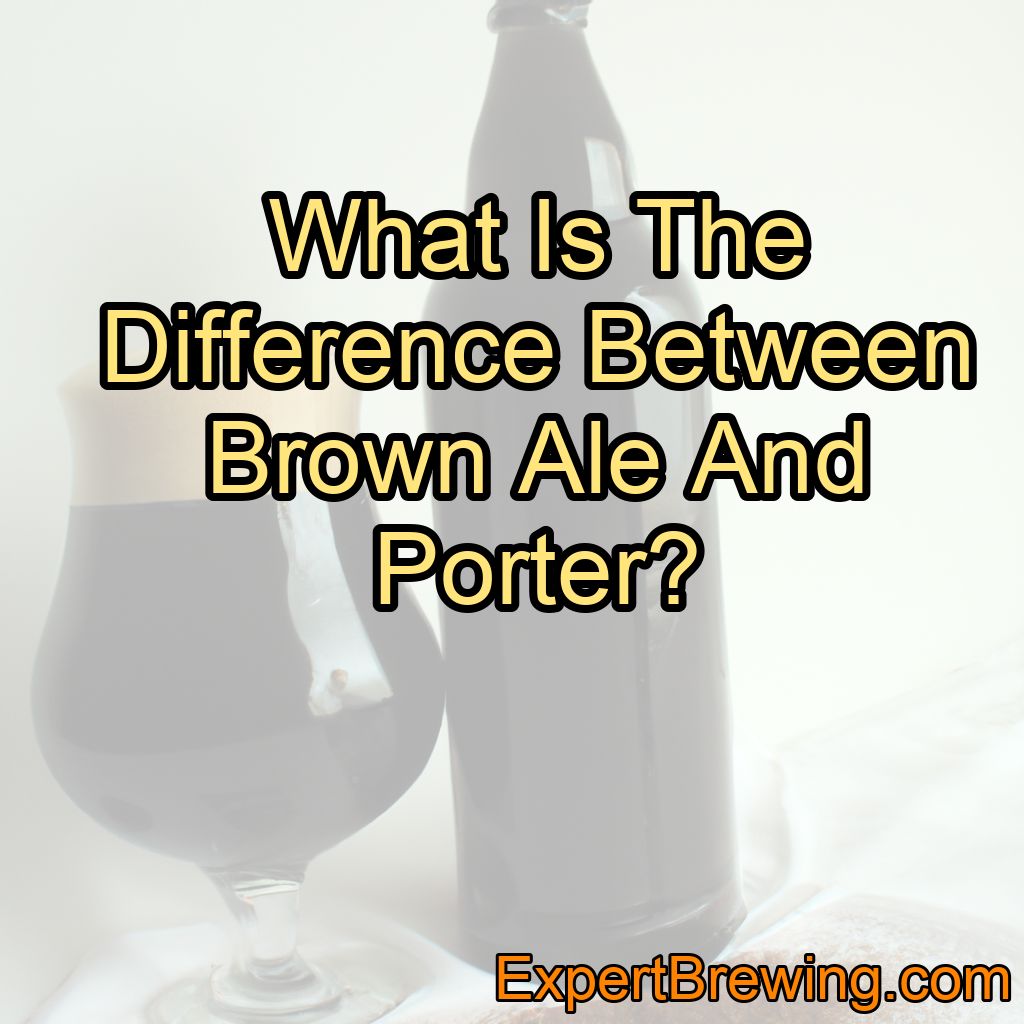In the world of beer, there are endless varieties to choose from, each with its own unique flavors, aromas, and characteristics. Two styles of beer that are often confused or misunderstood are brown ales and porters.
Although they share some similarities as darker ales, there are key differences between the two.
The main difference between brown ale and porter is the malt profile and brewing methods used to create each style, with brown ales being lighter and maltier, while porters are darker and more robust.
In this blog post, we’ll delve deep into the world of brown ales and porters, exploring their origins, brewing methods, and distinctive features.
A Brief History of Brown Ale
Brown ale is a style of beer that originated in England and has since spread across the globe. The first recorded mention of brown ale dates back to the 18th century, when it was used to describe a lightly hopped, malt-forward beer.

At this time, brown ales were brewed using a mixture of brown malts, which gave the beer its characteristic color and flavor.
In the 20th century, the popularity of brown ale began to wane as paler beers became more fashionable.
However, the style has experienced a resurgence in recent years, with modern craft brewers putting their own spin on this classic style.
Key Features of Brown Ale
- Malt-forward flavor profile
- Medium body
- Low to moderate hop bitterness
- Brown to dark brown color
Brown ales can be divided into two main subcategories: English Brown Ale and American Brown Ale.
English Brown Ale
English Brown Ales are characterized by their rich, malt-forward flavor profile, with notes of caramel, toffee, and toasted bread. They typically have a low to moderate hop bitterness, which serves to balance the sweetness of the malt. English Brown Ales are usually on the lower end of the alcohol by volume (ABV) spectrum, ranging from 4% to 5.5%.
American Brown Ale
American Brown Ales are a more modern interpretation of the classic English Brown Ale. They maintain the malt-forward flavor profile but are often more aggressive in their hop presence, with higher levels of bitterness and more pronounced hop flavors and aromas. American Brown Ales typically have a slightly higher ABV than their English counterparts, usually ranging from 5% to 7%.
A Brief History of Porter
Porter is another dark beer style that originated in England, with its roots dating back to the 18th century. The name “porter” is thought to have been derived from the style’s popularity among London’s working class, particularly among street and river porters.

Porter was initially brewed using a blend of brown, pale, and amber malts, which gave the beer its characteristic dark brown color, and roasted malt flavors.
Over time, the brewing process for porter evolved, with brewers opting to use black patent malt, which is kilned at a higher temperature, giving the beer a darker hue and more intense roasted flavors.
Today, there are several subcategories of porter, including English Porter, American Porter, and Baltic Porter.
Key Features of Porter
- Roasted malt flavors, often with notes of chocolate and coffee
- Medium to full body
- Moderate to high hop bitterness
- Dark brown to black color
English Porter
English Porters are characterized by their smooth, roasted malt flavors, with notes of chocolate, coffee, and caramel. They typically have a moderate hop bitterness, which serves to balance the malt sweetness. English Porters are usually on the lower end of the ABV spectrum, ranging from 4% to 6%.
American Porter
American Porters are a more modern interpretation of the classic English Porter. They maintain the roasted malt flavors but are often more aggressive in their hop presence, with higher levels of bitterness and more pronounced hop flavors and aromas. American Porters typically have a slightly higher ABV than their English counterparts, usually ranging from 5% to 7%.
Baltic Porter
Baltic Porter is a unique subcategory of porter that originated in the Baltic states and Scandinavia. This style is characterized by its higher alcohol content, usually ranging from 7% to 9.5%. Baltic Porters are often brewed using lager yeast, as opposed to the ale yeast used in other porter varieties, which gives the beer a cleaner, smoother flavor profile.
The Malt Profile: A Key Difference
One of the most significant differences between brown ale and porter is the malt profile. Brown ales are brewed with a variety of brown malts, which give the beer its characteristic malt-forward flavors and lighter color.

Porters, on the other hand, are brewed with a combination of pale, amber, and black malts, which provide more intense roasted flavors and a darker hue.
Brown ales are characterized by their malt-forward flavors and lighter color, while porters boast more intense roasted flavors and a darker hue due to the use of black malts.
Brewing Methods
Another key difference between brown ale and porter is the brewing methods employed to create each style. Brown ales are typically brewed using a single infusion mash, which involves adding hot water to the grain in a single step. This method is simpler and results in a lighter, maltier beer.
Porters, on the other hand, often utilize a more complex brewing process, employing a technique known as decoction mashing.
This method involves removing a portion of the mash, boiling it, and then returning it to the main mash. This process can be repeated multiple times, resulting in a more robust, complex flavor profile.
Brown ales are typically brewed using a simpler single infusion mash, while porters often employ a more complex decoction mashing process.
Hop Profiles
Although both brown ales and porters are malt-focused beers, they differ in their hop profiles. Brown ales typically have a low to moderate hop bitterness, with the hops serving to balance the sweetness of the malt. Porters, on the other hand, often have a more pronounced hop bitterness, particularly in the case of American Porters.
Brown ales typically have a lower hop bitterness than porters, with porters often boasting a more pronounced hop presence.
Mouthfeel and Body
Another distinction between brown ale and porter is their mouthfeel and body. Brown ales are generally lighter in body and have a smoother mouthfeel, making them easy-drinking and approachable. Porters, on the other hand, often have a fuller body and a more substantial mouthfeel, which can be attributed to their higher malt content and more complex brewing process.
Brown ales generally have a lighter body and smoother mouthfeel compared to porters, which often boast a fuller body and more substantial mouthfeel.
ABV and Drinkability
In general, brown ales tend to have a lower alcohol by volume (ABV) than porters. This lower ABV, combined with the lighter body and smoother mouthfeel, makes brown ales more approachable and easy-drinking.
Porters, with their higher ABV and fuller body, can be seen as more robust and complex, making them a popular choice for sipping and savoring.
Brown ales typically have a lower ABV and are more approachable and easy-drinking, while porters boast a higher ABV and are often seen as more robust and complex.
Pairing with Food
Both brown ales and porters pair well with a variety of foods, but their distinct characteristics lend themselves to different dishes.
Brown ales, with their malt-forward profile and lighter body, pair well with roasted meats, grilled vegetables, and hearty stews. Porters, with their more intense roasted flavors and fuller body, are a great match for smoked meats, rich chocolate desserts, and sharp cheeses.
Brown ales pair well with roasted meats and hearty stews, while porters are a great match for smoked meats and rich chocolate desserts.
Conclusion: Brown Ale vs. Porter
In conclusion, the main difference between brown ale and porter is the malt profile and brewing methods used to create each style, with brown ales being lighter and maltier, while porters are darker and more robust.
To sum up, here are 10 key facts about brown ale and porter:
1. Brown ale originated in England, while porter also has its roots in England but gained popularity among London’s working class.
2. Brown ale is characterized by its malt-forward flavor profile, while porter boasts roasted malt flavors.
3. Brown ale has a lighter color compared to porter, which is darker due to the use of black malts.
4. Brown ale is typically brewed using a single infusion mash, while porter often employs a more complex decoction mashing process.
5. Brown ale has a lower hop bitterness than porter, with porters often boasting a more pronounced hop presence.
6. Brown ale generally has a lighter body and smoother mouthfeel compared to porter, which often boasts a fuller body and more substantial mouthfeel.
7. Brown ale typically has a lower ABV and is more approachable and easy-drinking, while porter boasts a higher ABV and is often seen as more robust and complex.
8. English Brown Ale and American Brown Ale are the two main subcategories of brown ale.
9. English Porter, American Porter, and Baltic Porter are the main subcategories of porter.
10. Brown ales pair well with roasted meats and hearty stews, while porters are a great match for smoked meats and rich chocolate desserts.
Now that you know the difference between brown ale and porter, you can confidently explore these delicious beer styles and find the perfect one to suit your palate. Cheers!
FAQs
Is a brown ale the same as a stout?
No, a brown ale is not the same as a stout. Brown ales are typically lighter in color and body, with a nutty or caramel flavor profile. Stouts are darker and heavier, with a roasted or chocolate flavor profile.
What makes a drink a porter?
A porter is a dark beer that is typically brewed with roasted malts, giving it a rich, chocolatey or coffee-like flavor profile. It is also characterized by its medium to full body and low to moderate carbonation.
Is porter an ale or beer?
Porter is a type of ale.
What is porter in a drink?
Porter is a type of dark beer that originated in London in the 18th century. It is characterized by its roasted malt flavor and has a slightly sweet taste with hints of chocolate or coffee.
What makes an ale a porter?
Porter is a type of ale that is characterized by its dark color and roasted malt flavor, which gives it a slight bitterness and chocolate or coffee notes. It is also typically higher in alcohol content than other ales.
Can a porter be an ale?
No, a porter is a type of beer and an ale is a broad category of beer that includes porters, as well as other styles such as pale ales, brown ales, and stouts.




